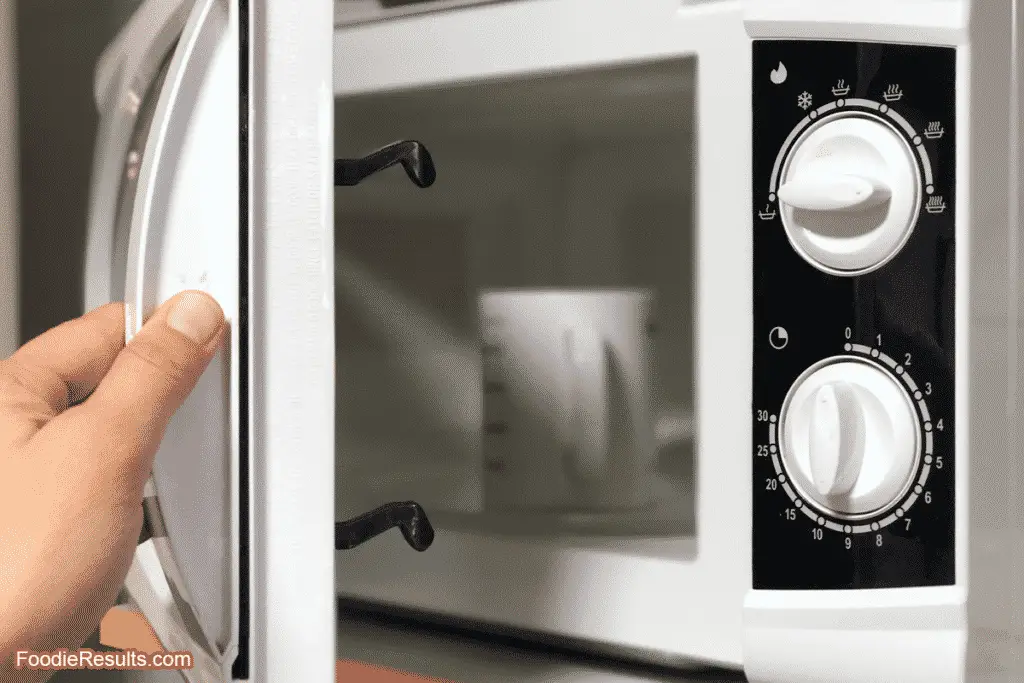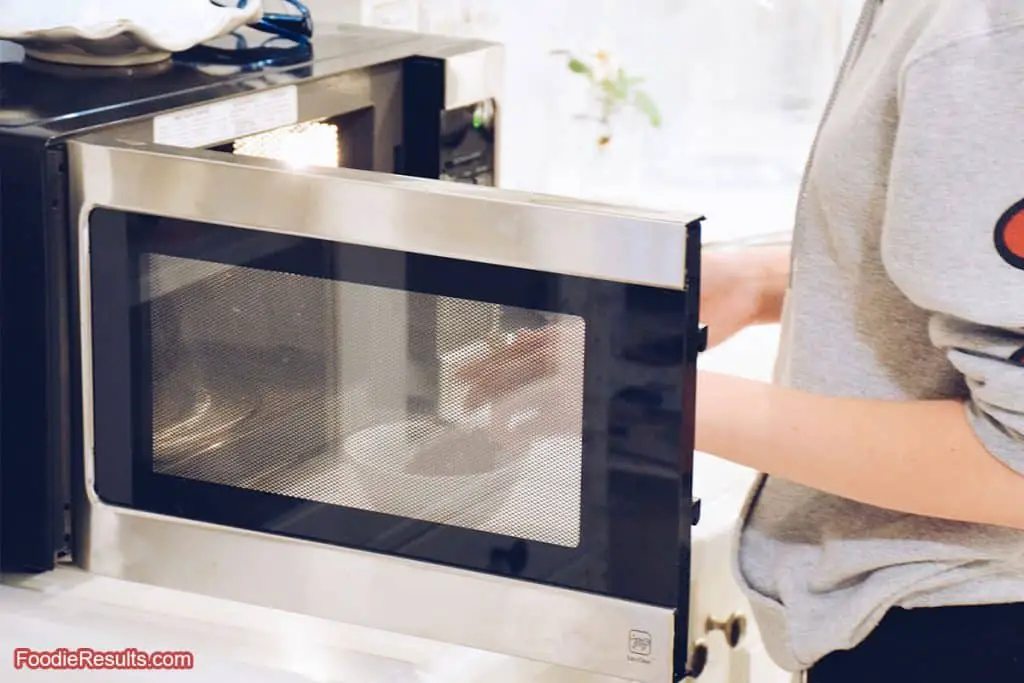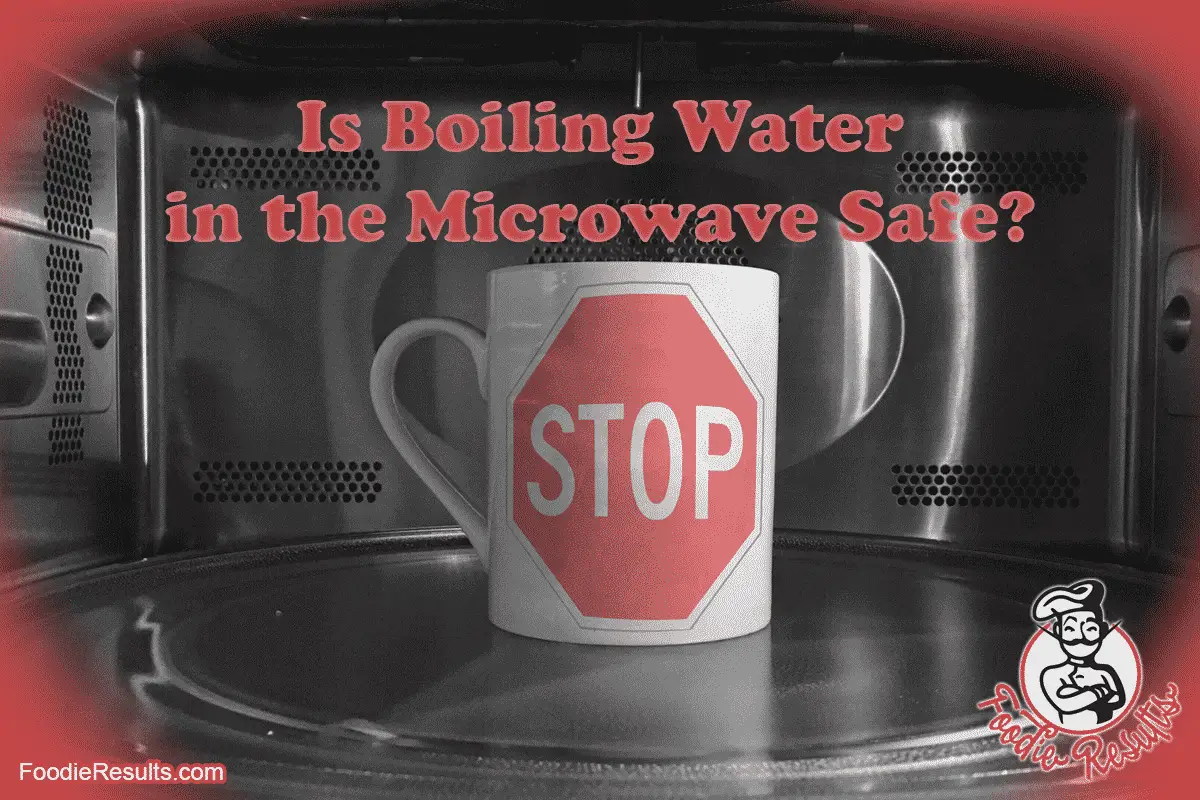I remember hearing that boiling water in the microwave was dangerous when I was relatively young. Still, I was always a little skeptical because I heated water in the microwave to make things like hot chocolate or tea. However, the warning I got from my dad was valid! Please continue reading to see why it is typically safe to boil water in your microwave, what the actual danger is, and how to avoid it. We look at whether it is safe to boil water in a microwave.
Answer: Due to superheating, boiling distilled water in the microwave is dangerous with explosive results; read below to find out why. However, if you are boiling tap water, it should be safe to boil it in the microwave. It is also safe to boil other types of water, such as spring; however, as the water’s purity increases, one needs to be more aware of cook time.
Keep reading to see find out how to make water in the microwave safe!
This concept means if you are making a cup of instant coffee, it might be good to add instant coffee before boiling the water in the microwave. The same goes for tea and other things you might mix with boiling microwave water, such as noodles, a recipe pack, spices, or whatever people make that requires mixing with hot water.
I add salt packs to my nettie pot when I use it because I’m using purer distilled water, and I don’t want to heat it too high without realizing it.
If you want to learn more, keep reading about superheated water and watch this excellent video I found from Mythbusters on YouTube.

What are the Dangers With Boiling Water in Your Microwave?
I started this section with one thing in mind, but there is another. First, we will look at superheating, and then we will look at unevenly distributed heat.
Superheating
Just like some villainous superpower, your microwave can make Superheated Water! As described on the FDA website is the real culprit here (click to read on FDA website, opens in new tab), but rather than regurgitate the FDA documents on this, check out this Mythbusters clip:
on FDA website, opens in new tab), but rather than regurgitate the FDA documents on this, check out this Mythbusters clip:
BOOM. Okay, maybe not that dramatic, but you can see the water did explode in the video. In the first shot, the experimenters, Jamie and Adam from Mythbusters, drop a sugar cube into a superheated coffee cup of distilled water.
The key here is distilled as the distillation process removes all minerals and impurities from the water. So now, when the water reaches the boiling point, nothing happens. There is a similar phenomenon called super freezing, but that is a topic for another day.
But watching the cube drop into the cup, you can see the water spreads out around the cup and explodes up high. It may not be “high,” but it was high enough to hit the false hand approx 2-3 inches from the cup, maybe a smidge higher considering smaller bits of scalding water likely made it higher. The video quality is not that great, but it is a great example.
But the real show was the second explosion.
Mythbusters used a larger volume of water in a definite larger vessel, a Pyrex-style measuring cup. This time they drop a fork in it. Done! The explosive liquid goes everywhere! It was strong enough to blow the fork out of the measuring cup!
In a nutshell, when you have a clean container such as a coffee mug or measuring cup, you use pure water with no impurities. Your water can superheat. When this happens, the water is higher or much higher than the boiling point. Once this happens, it introduces pollutants or breaks the surface tension on the top of the water, allowing it to explode as it starts to boil instantaneously all over. Doing this, of course, shoots steam and gassed water everywhere. (I plan to do a video about this one, so make sure you sub to our YouTube channel).
This situation should be pretty easy to avoid. You should be fine if you are careful each time you boil water in the microwave. It is expressed in the video when it is suggested to use distilled water.
However, our next one can cause you to burn your mouth. I know it has happened to me a few times.

Unevenly Distributed Heat
Have you ever reheated your pizza in the microwave? You know it is hot; you can feel the heat coming off the pizza as you bring it to your face. But you can’t wait, so you take a bite anyways, and the bottom bread is not too bad, so you take a full bite only to realize the cheese and sauce are at lava levels of heat.
This same thing can happen when you try to heat or boil water in the microwave. I only bring this one up because there have been times I know the water is hot enough to cook my ramen noodles and might even have a bubble or two.
It is a little ridiculous to think that someone would take the near-boiling or boiling water and take a drink, but I wanted to let you know about this potential other danger lurking in a coffee mug and microwave near you.
Really, for the most part, I think it is incredible the microwave sends the beams of heat out in a wave pattern and could create lines of heat in the water. Once the water starts to boil, it will mitigate the stratification effect of the waves to superheat some of the water locally.
Next, you might be wondering about the time it takes for water to reach boiling point. I’ve got you covered in the next section briefly and plan to make a resource page that will include a table that will consider the altitude, microwave wattage, and volume of water in both metric and imperial.

How Long to Boil Water in the Microwave?
I’m adding a table here with wattage and estimated time to keep things simple. This chart is all for 1 cup. You should be able to double the time for 2 cups. When my page is completed, the information will account for altitude. I will link it here.
| Wattage | Size (US) | Time |
| 600 | 1 Cup | 4 min (un) |
| 700 | 1 Cup | 3 min (un) |
| 900 | 1 Cup | 2 min 10 sec |
| 1000 | 1 Cup | 1 min 50 sec |
| 1100 | 1 Cup | 1 min 15 sec |
How To Improve the Safety of Microwave Boiling
One way to improve the safety of boiling water in the microwave is not to use distilled water. Suppose you must use distilled or any other water. Another way to increase safety is to add any ingredients such as salt, broth, sugar, or anything that will allow the microwave energy to distribute in the liquid and help mix it, allowing it to get that boiling action.
Another safety tip when boiling water in the microwave is not to be too hasty when pulling it out. If you have cooked the water long enough that it should be boiling and not, you should trust that it could be superheated now, and you should approach with caution.



Actually, my experience is different, and I’m hoping you can advise whether lowering the power-percentage on my TERRIFYING Sharp 209-F might be somewhat a resolution for me! Please help me!
See… Up until now, i’ve been using a 1980s Model R-2A55 (700-watt) Sharp microwave with ZERO problems. No scary issues of boilover DESPITE that i have always used pure water from filter-pitcher! It was a lifesaver for decades! ZERO SWEAT, and barely messes to clean. Eventually the push-button spring steadily began weakening, until i could barely open/shut the door anymore. Its now in my garage. Here’s the pic. so you know what a good microwave looks like: https://www.searspartsdirect.com/model/5loo569kpa-000958/sharp-r-2a55-countertop-microwave-parts
Now that the vintage 1980s one is in my garage, i’ve begun using a horrific Sharp R-209F (800-watt) which i’d bought approx 25 years ago at Walmart to have on hand as a spare.
It’s first now that i’m experiencing scary problems of boilover, using the SAME TYPE of pure pitcher-water as i used with the 1980s model. Except now – when i make pasta – it boils over and/or turns into a “burnt-pasta-cake” with burn-marks all over the dried-out pasta. Whichever way, it’s a major mess to clean the bowl and the microwave, unlike the 1980s model. Or else when i tried defrosting frozen pita, i saw smoke billowing inside, but the STOP button did not work on the R-209F! That never happened with my vintage one! So to avoid burning the house down, I pulled open the door (in a panic) while it was in process, just to get it to STOP!
Is it just a matter of lowering the power on this horrible 800-watt? How can it be that just 100 watts more should make it so horrible? It’s gotta be something else, besides the malfunctioning STOP button…
Thanks for your comment and for sharing your experiences with different models of Sharp microwaves. It seems like you’re having some issues with your Sharp R-209F microwave, like boilovers and a stop button that doesn’t work. My wife and I have also experienced similar issues with our newer microwave, and we feel like the newer common appliances we have gotten in the last several years have been …. not so great. Of course, we love Air Fryers and pressure cookers, which is why I keep writing about them, and I’ve stopped using the microwave almost entirely.
I think it’s possible that the higher wattage of the Sharp R-209F (800W) is causing your food to cook too quickly and therefore boil over or become overcooked. Lowering the power setting to a lower percentage might help prevent these issues. However, it’s also possible that there could be other factors at play, like the type and size of the container you’re using, the type of food you’re cooking, or the specific settings you’re using on the microwave.
To troubleshoot these issues with your Sharp R-209F microwave, I recommend checking the owner’s manual for instructions on adjusting the power setting and other troubleshooting tips. You could also try using different containers or cooking settings to see if that makes a difference. If you cannot resolve the issues or have any further concerns, you might want to contact Sharp customer support for additional help. It’s always worth trying to figure out what’s happening with a malfunctioning appliance, but it’s also important to be careful and stay safe when doing so. I hope you will update us on what happens.